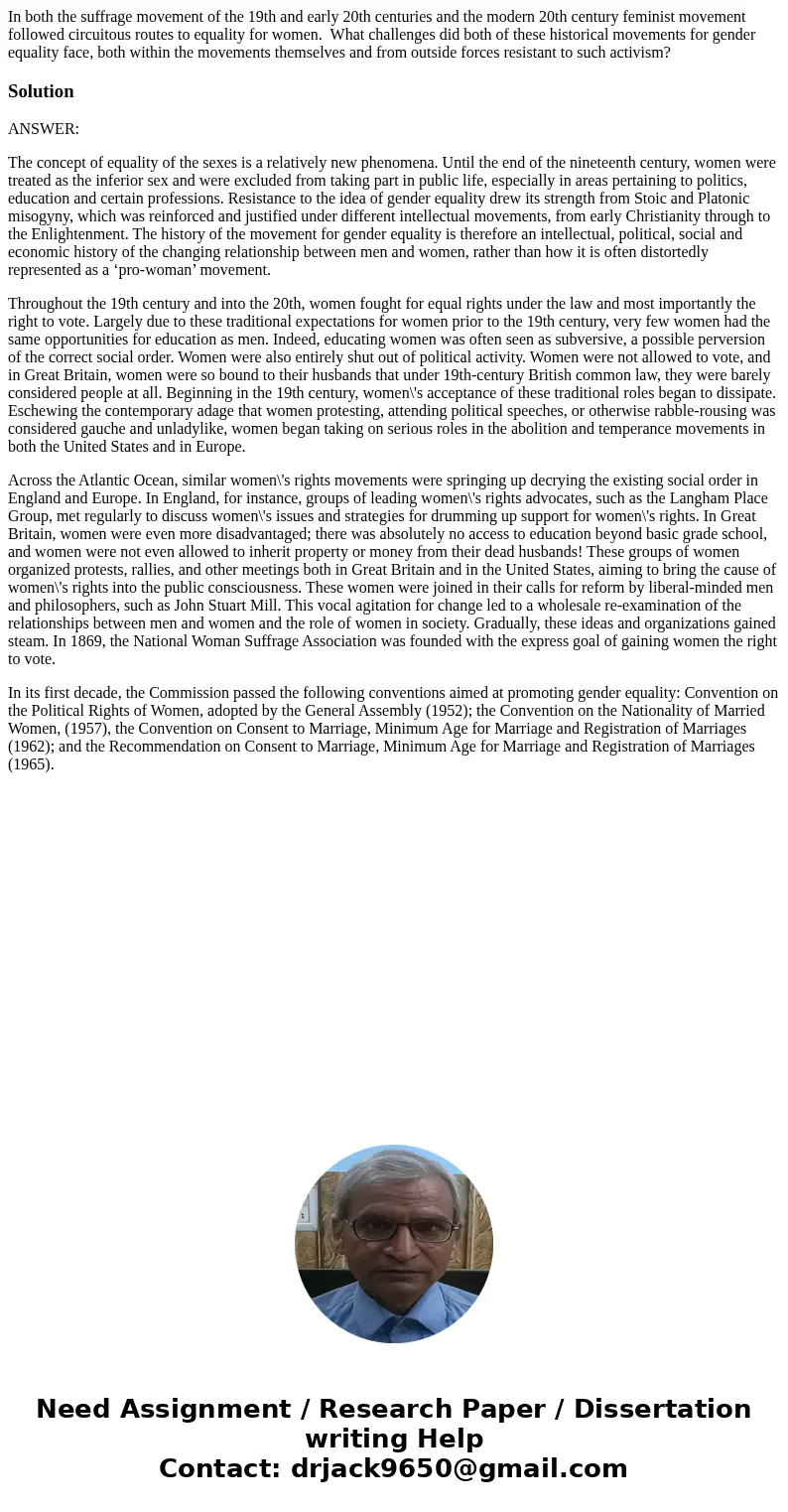In both the suffrage movement of the 19th and early 20th cen
In both the suffrage movement of the 19th and early 20th centuries and the modern 20th century feminist movement followed circuitous routes to equality for women. What challenges did both of these historical movements for gender equality face, both within the movements themselves and from outside forces resistant to such activism?
Solution
ANSWER:
The concept of equality of the sexes is a relatively new phenomena. Until the end of the nineteenth century, women were treated as the inferior sex and were excluded from taking part in public life, especially in areas pertaining to politics, education and certain professions. Resistance to the idea of gender equality drew its strength from Stoic and Platonic misogyny, which was reinforced and justified under different intellectual movements, from early Christianity through to the Enlightenment. The history of the movement for gender equality is therefore an intellectual, political, social and economic history of the changing relationship between men and women, rather than how it is often distortedly represented as a ‘pro-woman’ movement.
Throughout the 19th century and into the 20th, women fought for equal rights under the law and most importantly the right to vote. Largely due to these traditional expectations for women prior to the 19th century, very few women had the same opportunities for education as men. Indeed, educating women was often seen as subversive, a possible perversion of the correct social order. Women were also entirely shut out of political activity. Women were not allowed to vote, and in Great Britain, women were so bound to their husbands that under 19th-century British common law, they were barely considered people at all. Beginning in the 19th century, women\'s acceptance of these traditional roles began to dissipate. Eschewing the contemporary adage that women protesting, attending political speeches, or otherwise rabble-rousing was considered gauche and unladylike, women began taking on serious roles in the abolition and temperance movements in both the United States and in Europe.
Across the Atlantic Ocean, similar women\'s rights movements were springing up decrying the existing social order in England and Europe. In England, for instance, groups of leading women\'s rights advocates, such as the Langham Place Group, met regularly to discuss women\'s issues and strategies for drumming up support for women\'s rights. In Great Britain, women were even more disadvantaged; there was absolutely no access to education beyond basic grade school, and women were not even allowed to inherit property or money from their dead husbands! These groups of women organized protests, rallies, and other meetings both in Great Britain and in the United States, aiming to bring the cause of women\'s rights into the public consciousness. These women were joined in their calls for reform by liberal-minded men and philosophers, such as John Stuart Mill. This vocal agitation for change led to a wholesale re-examination of the relationships between men and women and the role of women in society. Gradually, these ideas and organizations gained steam. In 1869, the National Woman Suffrage Association was founded with the express goal of gaining women the right to vote.
In its first decade, the Commission passed the following conventions aimed at promoting gender equality: Convention on the Political Rights of Women, adopted by the General Assembly (1952); the Convention on the Nationality of Married Women, (1957), the Convention on Consent to Marriage, Minimum Age for Marriage and Registration of Marriages (1962); and the Recommendation on Consent to Marriage, Minimum Age for Marriage and Registration of Marriages (1965).

 Homework Sourse
Homework Sourse